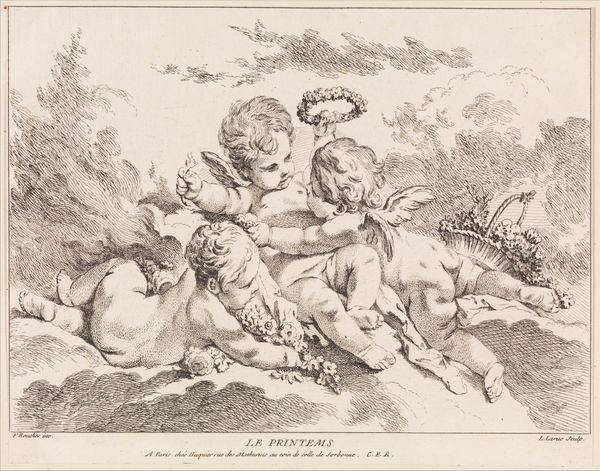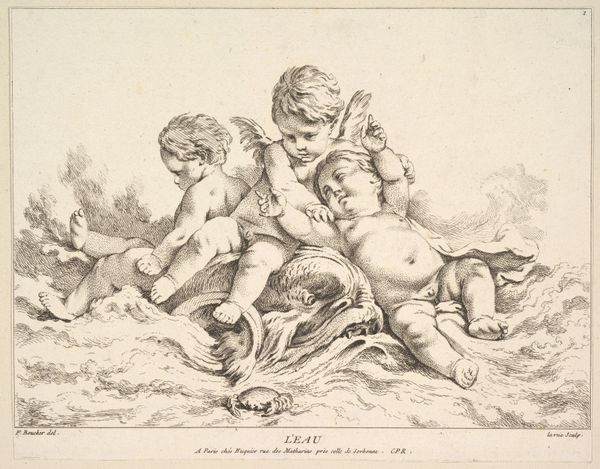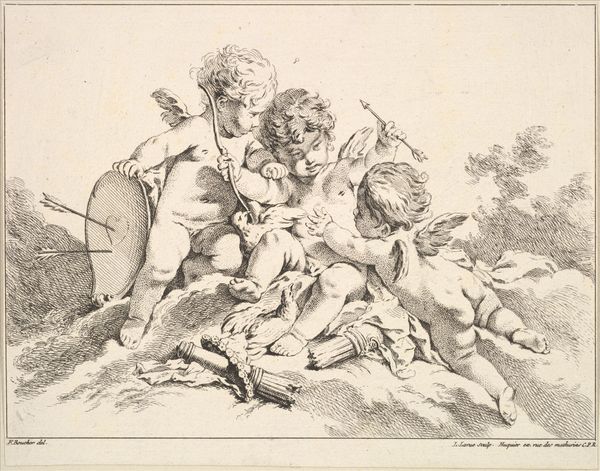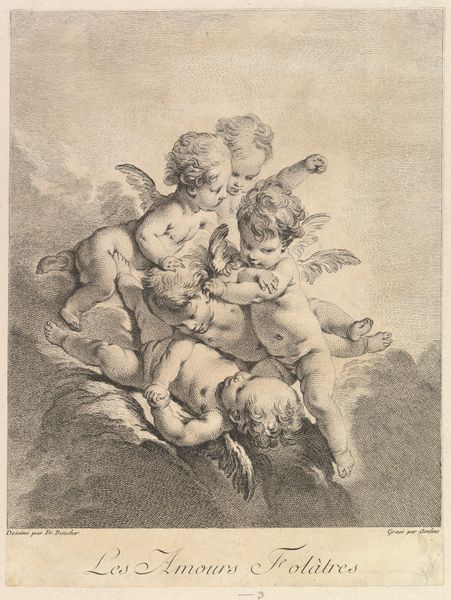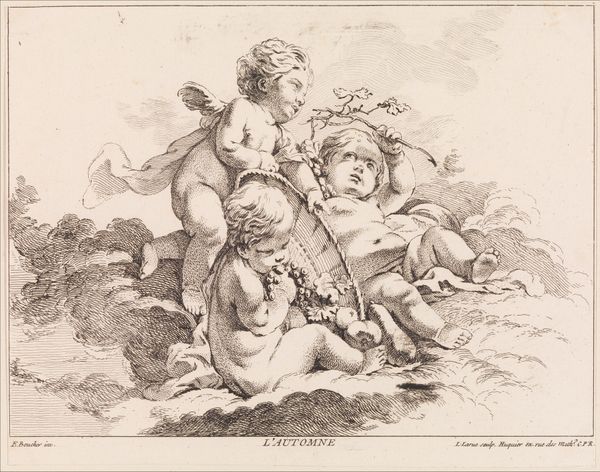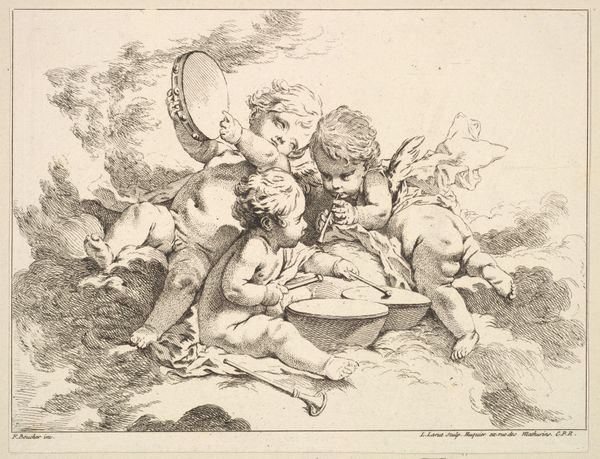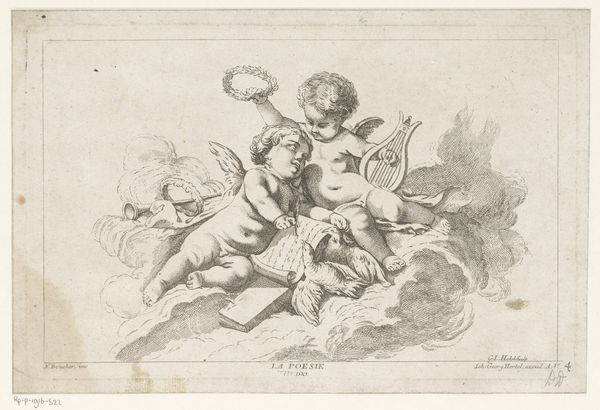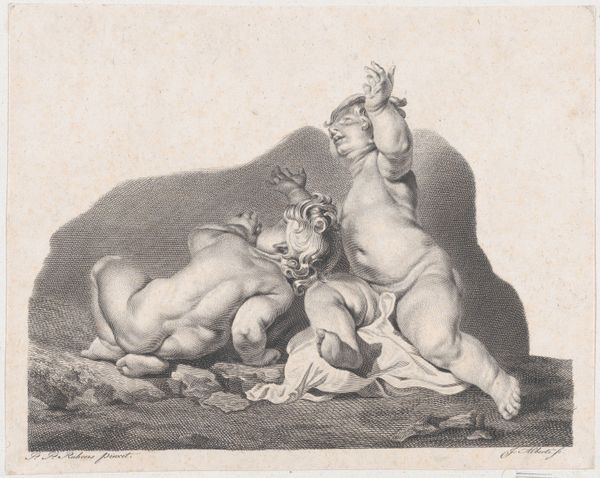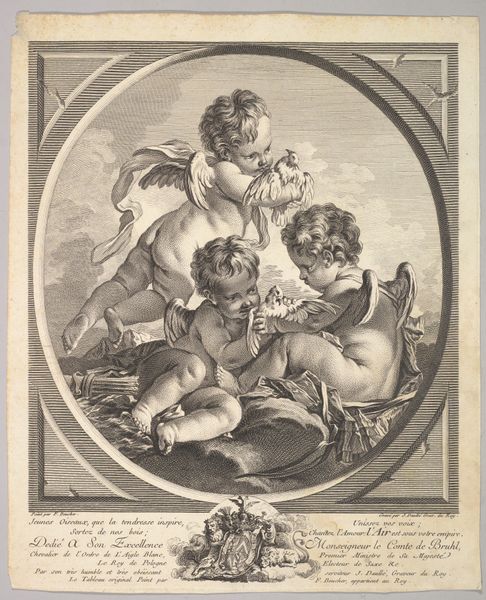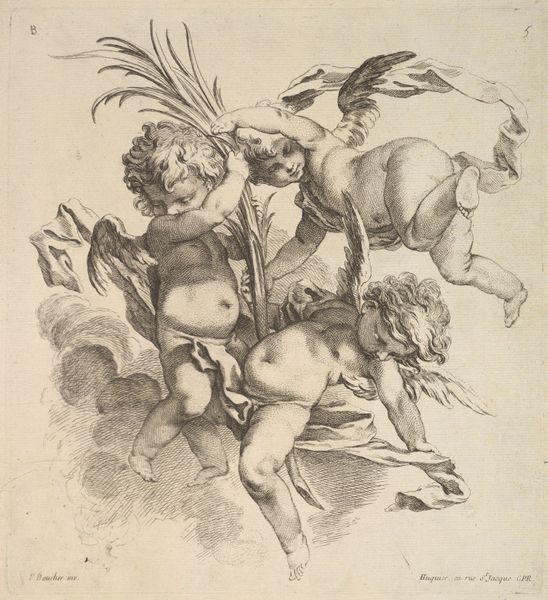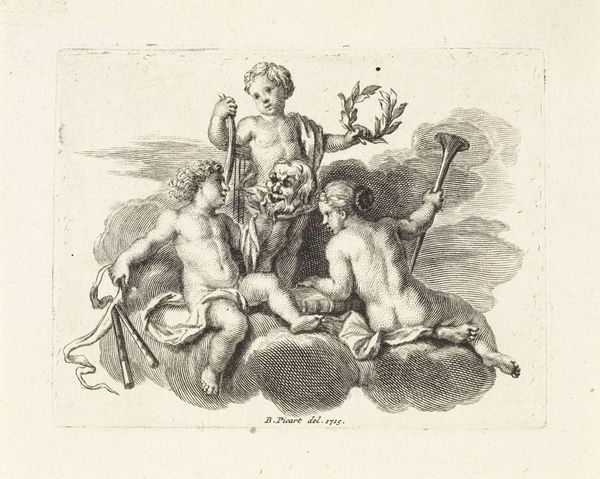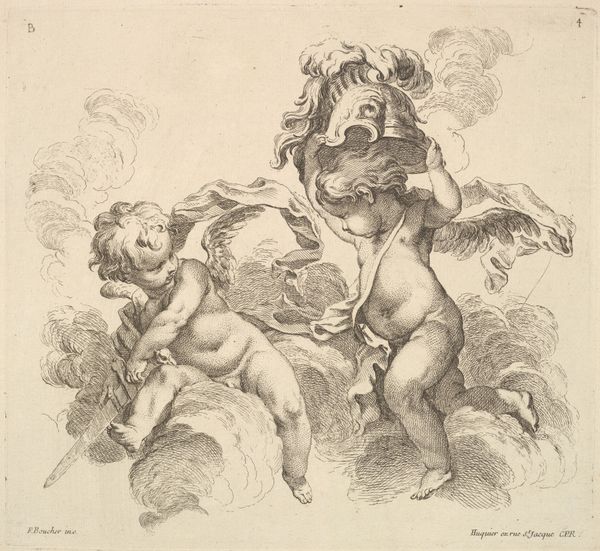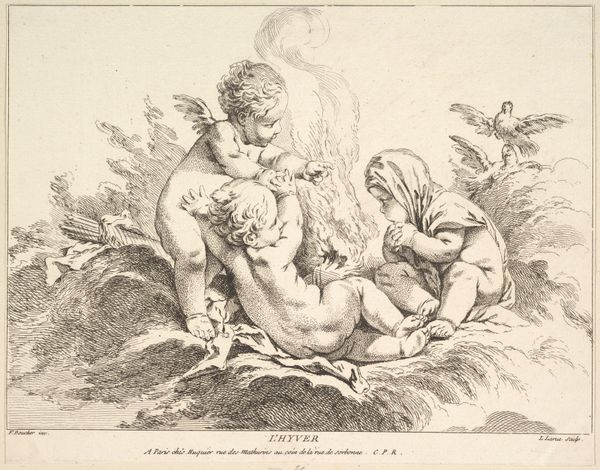
drawing, print, etching, engraving
#
drawing
#
allegory
#
baroque
# print
#
etching
#
figuration
#
pencil drawing
#
genre-painting
#
engraving
Dimensions: Sheet (trimmed): 10 3/16 × 11 11/16 in. (25.8 × 29.7 cm) Plate: 9 7/8 × 10 9/16 in. (25.1 × 26.9 cm)
Copyright: Public Domain
Editor: Here we have Gabriel Huquier's "Three Children with a Fruit Plate," an etching and engraving from about 1738 to 1745. The detail achieved with simple lines is incredible! What strikes me most is how alive these cherubic figures seem despite the static medium. What can you tell me about it? Curator: Notice how Huquier uses etching and engraving, reproductive techniques, to circulate an image. He's not creating the image ex nihilo. Rather, he’s mediating Boucher’s initial design, making it available to a wider, likely middle-class, audience. How does this mass production affect the perceived value or aura of the original artistic concept, in your opinion? Editor: Interesting. So, instead of focusing on Huquier’s singular genius, you're drawn to the collaborative production and how this print served as a commodity, circulating images and ideas to a broader market. Is it then, that the image itself is not as important as its distribution, which democratizes access to art? Curator: Precisely! The paper itself, the ink, the press—these are all products of industry, of labour. These materials are transformed through skilled hands. The engraving facilitates not just aesthetic appreciation but the propagation of cultural values tied to consumption. Consider how prints were used in fashion or furniture design, directly impacting the material culture of the period. Editor: So, we're seeing that this isn’t just a drawing of cute cherubs, but rather a window into the social and economic structures of 18th-century Europe. By focusing on how this artwork was made and consumed, we can really understand the broader context of the time. Curator: Indeed. We shift from considering aesthetics alone to examining the material reality of its creation and dissemination, challenging traditional notions of artistic value. It urges us to question what "art" truly means in a world driven by production. Editor: Fascinating, it changes how you view not just the artwork, but how we assess artistic relevance. Thank you!
Comments
No comments
Be the first to comment and join the conversation on the ultimate creative platform.

